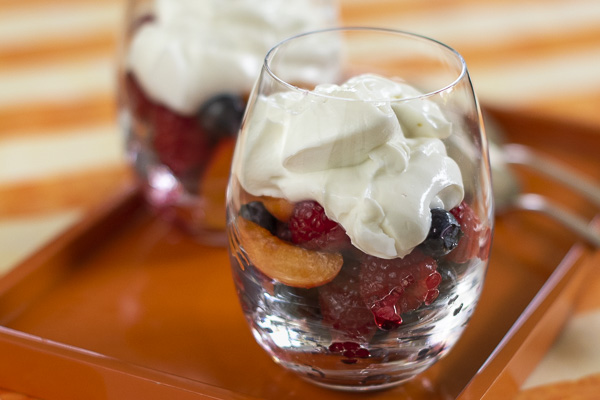As the author of a yogurt cookbook, I should know something about skyr (pronounced skeer). Sales are growing in the U.S. for this Icelandic dairy product, but when a friend asked me how it differed from yogurt, I couldn’t say. It’s thick, creamy, tangy cultured milk—like yogurt. It’s fermented with bacteria—like yogurt. So why do Icelanders insist that it isn’t yogurt?
“They eat it like yogurt and use it like yogurt, but they are quite adamant that it’s not yogurt,” says my food-writer friend, Jennie Schacht, who recently returned from an Icelandic cruise.
Fruit-flavored skyr was always on the breakfast buffet, reports Schacht, and she took to it like an Iceland native. “When I ate it for the first time, I thought, ‘This is so rich, I shouldn’t be eating so much,’” says Schacht. “Then I learned it was nonfat.”
A spokesperson for Icelandic Provisions, a brand launched in the U.S. three years ago, says skyr is considered a fresh cheese in Iceland. Perhaps that’s because, in the past, skyr sometimes contained rennet, so it was more curd-like. Farmers would skim the cream from fresh milk for butter, then transform the skimmed milk into skyr. Icelanders love to eat skyr with cream poured on top, which is sort of like having a non-alcoholic beer with a vodka chaser.
I’m not aware of any American-made skyr that contains rennet, so I don’t view it as cheese. It’s simply milk—nonfat, low-fat or whole—cultured with bacteria, in some cases the same bacteria used for yogurt. It’s a lot closer to Greek yogurt than to cheese.
Like much Greek yogurt, modern skyr production relies on milk that’s concentrated before culturing. A filtration process removes water and whey, slimming four cups of milk down to one cup. Then it’s cultured. That’s why skyr contains so much protein per cup—about 25 grams, roughly twice as much as regular yogurt. But most Greek yogurt can make the same nutritional claim. (Of course in the old days—and still today on a home scale—the cultured milk would be strained to make it thick.)
Fruit-flavored skyr typically has less sugar than fruit-flavored yogurt and no yucky stabilizers such as pectin. That’s a good thing. But I still think it’s smarter to buy plain skyr and add only as much sweetener as you like, if any. Buying plain skyr means you can use it in savory ways, too, like dressing a cucumber salad or slathering on rye toast with smoked salmon.
Schacht told me about another use for skyr that I immediately ran into my kitchen to try. “We had butter whipped with skyr,” she recalls. “In a bakery they would give you slabs of wonderful bread and there would be a big blob of whipped skyr butter to spread on your bread and sprinkle with coarse salt.”
As an experiment, I put four ounces of unsalted butter in a food processor with two ounces (1/4 cup) of skyr and whipped the heck out of it. Then I folded in coarse sea salt to taste. It was delicious straight out of the food processor, like whipped cultured butter. But chilling wasn’t a good idea. By the next morning, the mixture had weeped moisture and was no longer fluffy. Next time, I will do a 3:1 ratio and serve it without chilling.


